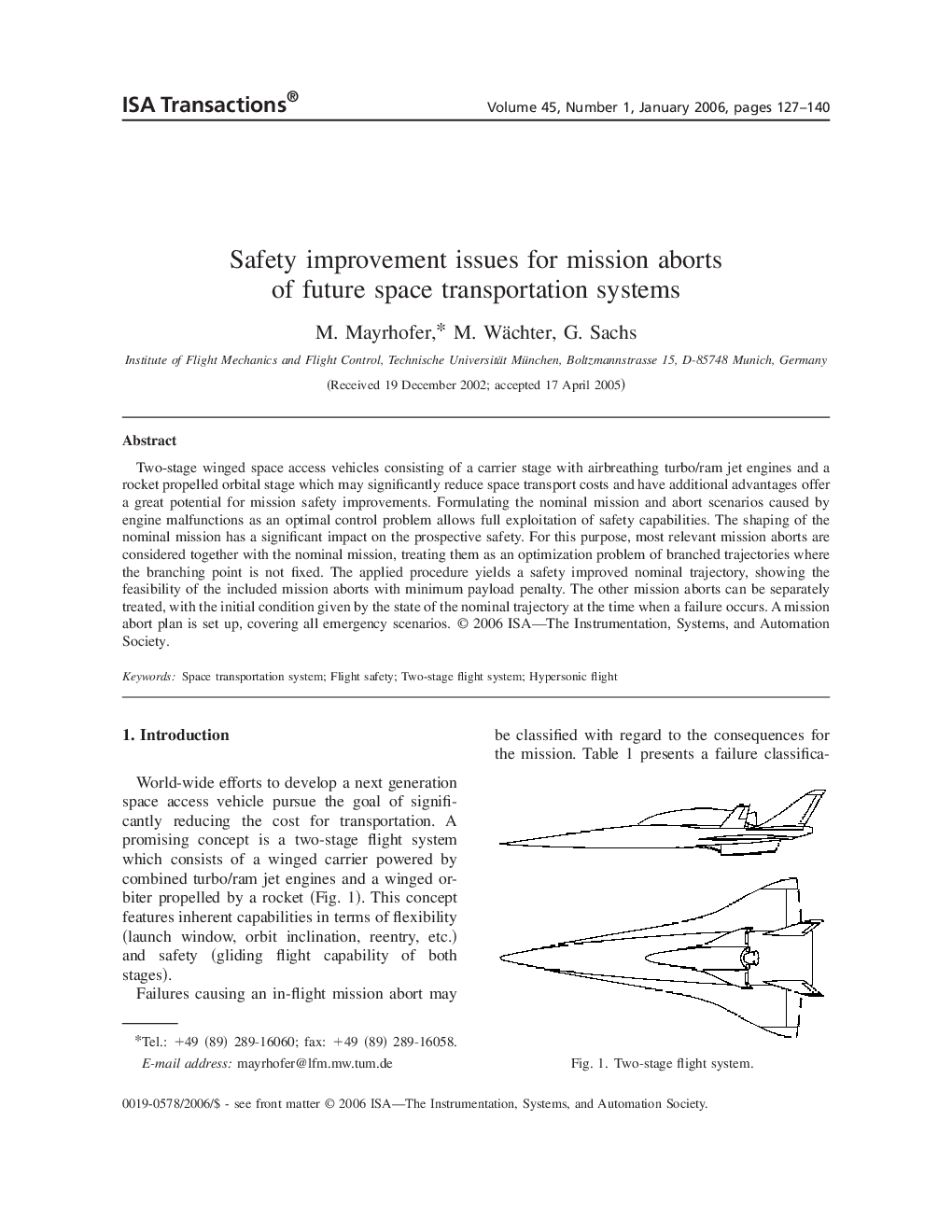| Article ID | Journal | Published Year | Pages | File Type |
|---|---|---|---|---|
| 5005551 | ISA Transactions | 2006 | 14 Pages |
Abstract
Two-stage winged space access vehicles consisting of a carrier stage with airbreathing turbo/ram jet engines and a rocket propelled orbital stage which may significantly reduce space transport costs and have additional advantages offer a great potential for mission safety improvements. Formulating the nominal mission and abort scenarios caused by engine malfunctions as an optimal control problem allows full exploitation of safety capabilities. The shaping of the nominal mission has a significant impact on the prospective safety. For this purpose, most relevant mission aborts are considered together with the nominal mission, treating them as an optimization problem of branched trajectories where the branching point is not fixed. The applied procedure yields a safety improved nominal trajectory, showing the feasibility of the included mission aborts with minimum payload penalty. The other mission aborts can be separately treated, with the initial condition given by the state of the nominal trajectory at the time when a failure occurs. A mission abort plan is set up, covering all emergency scenarios.
Related Topics
Physical Sciences and Engineering
Engineering
Control and Systems Engineering
Authors
M. Mayrhofer, M. Wächter, G. Sachs,
